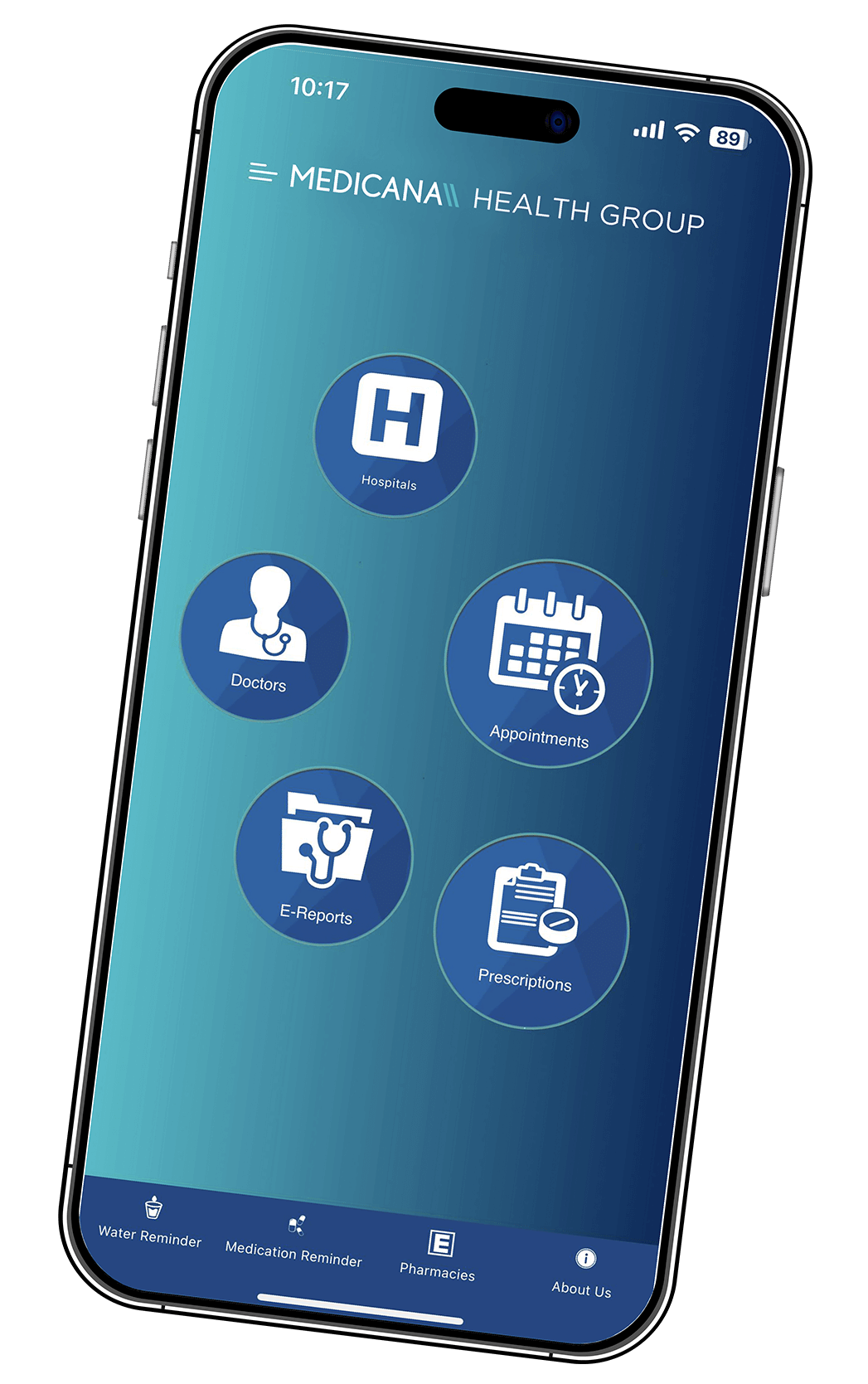Abdominal and Inguinal Hernia Repair

Overview
An abdominal and inguinal hernia occurs when a balloon-like sac forms at a spot where the front abdominal wall muscles and membranes are weakened. This weakening can result from several factors, including the natural aging process, activities that raise pressure within the abdomen (such as heavy lifting, coughing, or straining), inherent weakness in infants and children, and changes to the structure of the abdominal wall caused by surgery, pregnancy, or injury.
The majority of hernias develop in the groin area, though they can also appear near the belly button or at the site of previous abdominal surgery incisions.
Often, abdominal and inguinal hernias remain symptom-free and can go unnoticed for years. Pain typically arises when parts of the abdominal lining and a segment of the intestine protrude into the hernial sac. Initially, this protrusion can be pushed back into the abdominal cavity. However, as the hernia enlarges over time, activities that increase abdominal pressure, such as heavy lifting, straining, or coughing, can lead to acute pain and a burning sensation.
When it becomes impossible to push the hernia sac back into the abdominal cavity, surgical intervention is considered a viable treatment for abdominal and inguinal hernias. This situation, known as incarceration, leads to the hernia sac becoming strangulated, cutting off blood supply to the "herniating" tissues and causing tissue death (necrosis). Urgent signs that surgery is needed include severe nausea and vomiting, fever, and intense or unbearable pain.
Surgery for a hernia is recommended if the hernia results in debilitating pain and swelling, or if the hernia can no longer be repositioned into the abdominal cavity. The goal of hernia surgery is to mend and reinforce the abdominal wall's weakened area.
Why is this procedure done?
Hernia operations are recommended if the hernia leads to significant pain and swelling, or if it cannot be manually repositioned back into the abdominal area. The purpose of hernia surgery is to fix and strengthen the weakened section of the abdominal wall.
A hernia is identified during a physical examination by the presence of a noticeable lump in the abdominal wall or groin area. In some instances, to make a diagnosis clearer, your doctor may ask you to stand and cough, which can cause the bulge to become more pronounced due to increased abdominal pressure.
While hernia repairs are commonly performed under general anesthesia through open surgery, the laparoscopic approach is an alternative option. Laparoscopic surgery offers benefits such as quicker recovery, reduced time in the hospital, and lesser post-surgery discomfort. Each surgical method varies in terms of patient safety and outcomes.
Risks
Like any surgical procedure, hernia repair surgeries come with their own set of risks, including:
• Complications related to anesthesia
• Injury to nearby nerves and blood vessels
• Hernia recurrence
• Infection
• Hematoma formation
• Blockage in the gastrointestinal tract
Despite employing the full scope of precautions modern medicine provides to mitigate these risks, it's important to understand that it's impossible to guarantee their complete avoidance. Our team of skilled surgeons is committed to implementing all available strategies to minimize the likelihood of these complications. Furthermore, our surgeons will provide comprehensive preoperative information regarding the aforementioned risks and any additional potential issues, ensuring all your queries and concerns are thoroughly addressed.
Preparation
In all Medicana Hospitals, the initial stage of pre-surgery planning follows a uniform process. Hernia repair is performed under general anesthesia.
To prepare for the operation, your surgeon conducts a series of evaluations to ensure your general health status is suitable for the procedure and to address any conditions that could increase surgical risk.
• Examination of medical history
• Comprehensive physical assessment
• Required lab tests and imaging to assess risks associated with surgery
• Evaluations by anesthesiologists, alongside additional lab and imaging tests, aimed at reducing complications related to anesthesia
Once it's confirmed that the surgery can be safely performed, you'll be advised to cease smoking if you smoke and to discontinue any medications known to enhance bleeding risk. A review of your current medications, including prescription drugs, over-the-counter treatments, herbal remedies, and supplements, will be conducted, and you'll be advised on which to continue or halt.
Before the surgery, you'll receive comprehensive information about the surgical process, including an explanation of what to expect, the potential risks involved, and the anticipated recovery timeline.
Additionally, you'll be given specific instructions to abstain from eating and drinking for a set period prior to the operation. It's crucial to adhere to these guidelines to proceed with the surgery as planned.
Once the safety of the surgery is assured, you will be encouraged to stop smoking to reduce surgical risks and enhance your recovery after the operation. Your current medications, including both prescription and over-the-counter drugs for various conditions, will be evaluated. You will be advised on which medications, particularly blood thinners that can lead to increased bleeding, should be discontinued prior to surgery. Additionally, the dosages of medications for chronic conditions like diabetes and hypertension may be temporarily adjusted. The use of all other over-the-counter drugs, herbal remedies, and supplements will be assessed, and you will receive guidance on which to pause or continue.
Moreover, planning discharge, post-discharge accommodation, and travel at this phase to better manage the postoperative period is reasonable.
Surgery and early postoperative period
Following standard pre-surgery protocols, such as the administration of intravenous medications and the placement of a breathing tube, you will breathe in a mixture of anesthetic gas and oxygen in the operating room, leading to unconsciousness. Subsequently, the area where the incision will be made is thoroughly cleaned in preparation for either open or laparoscopic surgery.
During open surgery, an incision is made in the abdominal wall to access the hernia sac. The surgeon then repositions any tissues trapped within the sac back into the abdominal cavity. To reinforce the area and prevent the hernia from recurring, the site is repaired, and a mesh, a type of support material, is inserted.
Using the laparoscopic technique, your surgeon will create four small cuts on your abdomen. Initially, CO2 gas is introduced through one of these incisions to expand your abdominal cavity. A camera is then inserted for internal visualization. The other incisions serve as entry points for surgical tools.
Once tissues trapped in the hernia sac are moved back into the abdominal cavity, the weakened section of the abdominal wall is fixed. To prevent the hernia from returning, a piece of support material, known as mesh, is placed over the area.
You will be under close monitoring until you fully recover from the anesthesia, after which you will be moved to your room.
Once you've regained consciousness from the anesthesia and are capable of walking, our medical team will assist or oversee your initial movements.
Post-surgery, pain management medication will be provided to alleviate any discomfort. Antibiotics may also be prescribed as a precaution against potential infections.
Detailed instructions on how to safeguard your surgical site will be given to you, including comprehensive guidance on caring for your wound. It's crucial to adhere to your doctor's advice post-operation to ensure the best possible recovery and to support the surgical results.
Results
After four hernia surgeries, you may be discharged on the same day. However, if your surgeon considers it necessary, you may be hospitalized one day to stabilize your overall health.
Should your surgery have been necessitated by high-risk factors, like hernia strangulation (incarceration), and complications arise, it's probable that your stay in the hospital will extend.
Post-hernia surgery, it's crucial to be mindful of activities that could increase pressure within your abdomen. Assistance may be necessary for getting out of bed, or you'll need to follow specific instructions from your doctor on how to do so safely until your wound has fully healed.
Recovery to a state of feeling completely well and resuming normal activities typically spans one to two weeks. During this period, adhering precisely to your doctor's guidance is vital for ensuring the surgery's success is maintained.




















